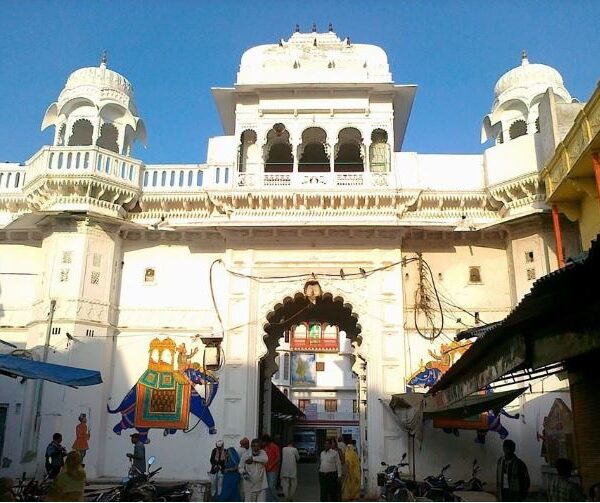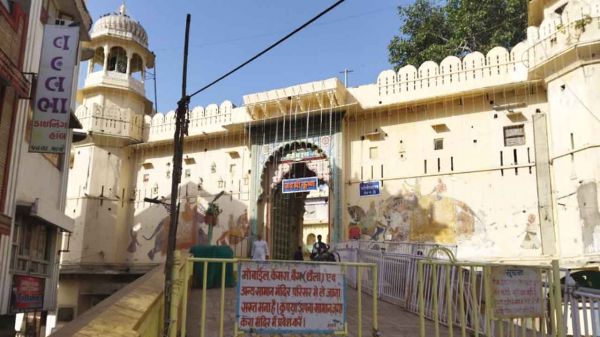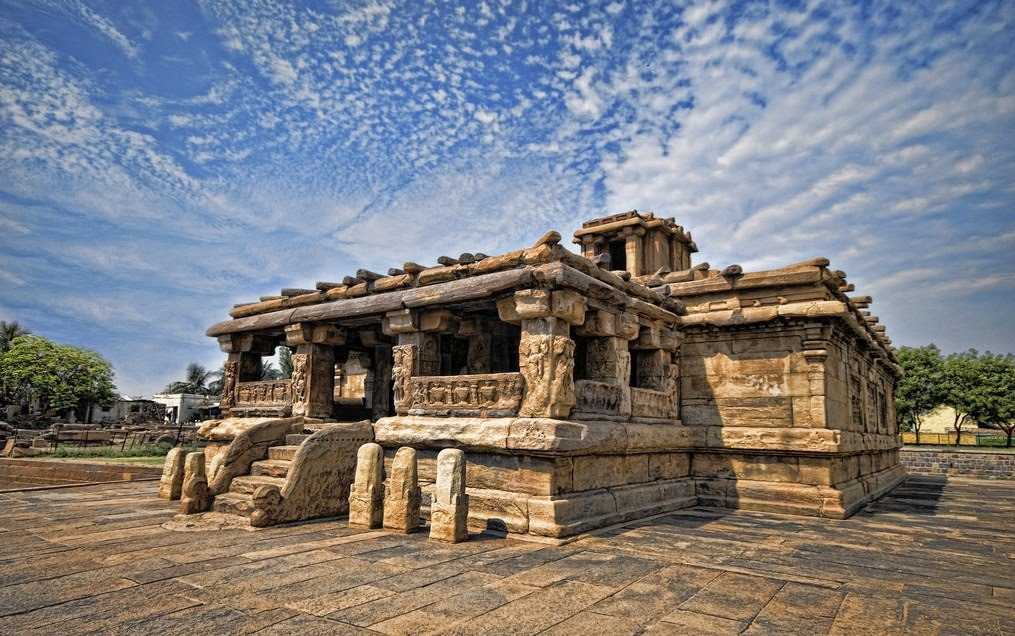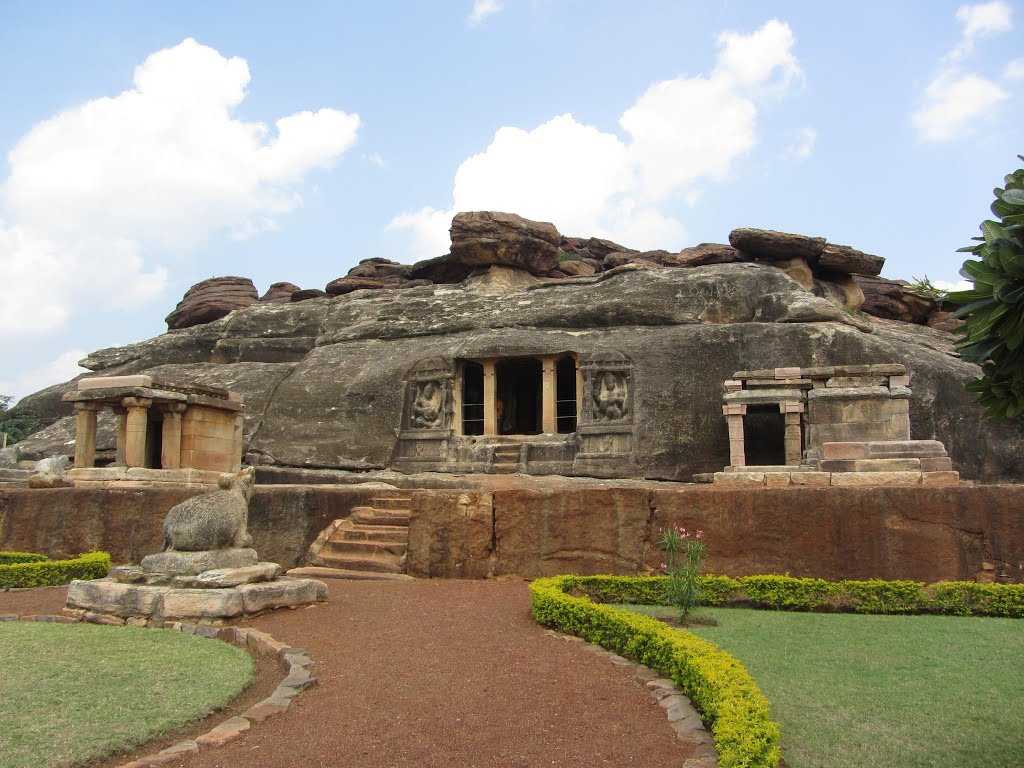Complete Guide about Shrinathji Temple
-
Location
Shrinathji temple, NH 8, Shiv Nagar, Nathdwara, Rajasthan 313301
-
Timings
Every Day
05:00 AM - 12:30 PM
03:00 PM - 08:30 PM -
Entry Fee
Free Entry


Shrinathji Temple
About
Shrinathji Temple
The Puranas and the Vedas contain a wealth of wisdom, and the gods that are mentioned in these sacred writings are models for all people. Lord Vishnu, one of the three main gods, is the one who used 10 incarnations to save humanity from demons. There are multiple locations where each avatar’s renowned temple can be discovered. The Shrinathji Temple is one such instance.
The Shrinathji Temple is also located in Pakistan and the USA. There are 11 Shrinathji temples in the USA alone. The Shrinathji Temple in Udaipur is one of the most prominent Shrinathji Temples in India or the entire world. A seven-year-old version of Vishnu Ji was known as Shrinathji.
You can seek assistance from Udaipur Tourism, a unit of Holidays DNA, which is committed to assisting you in comfortably exploring every facet of the City of Lakes.
Shrinathji Temple Official website Link
www.nathdwaratemple.org
The History
The seven-year-old Krishna is honoured in the Shrinathji representation of God Krishna. This Swaroop of Krishna is referred to as Gopala, and the Vallabhacharya initially worshipped him in the Govardhan district of Vrindavan.
Idol: On a monolith composed of black stone, there is a sculpture of Shrinathji. According to tradition, the idol’s stone was self-manifested from the Govardhan Mountain sometime around the 12th century BC. Lord Krishna raised the Govardhan Mountain to shield the citizens of Vrindavan from the fury of the envious Lord Indra.
Protection: Many foreign settlers, including Sultans and Mughals, have threatened to pillage and ruin numerous shrines.
The seven-year-old Krishna is honoured in the Shrinathji representation of God Krishna. This Swaroop of Krishna is referred to as Gopala, and the Vallabhacharya initially worshipped him in the Govardhan district of Vrindavan.
Idol: On a monolith composed of black stone, there is a sculpture of Shrinathji. According to tradition, the idol’s stone was self-manifested from the Govardhan Mountain sometime around the 12th century BC. Lord Krishna raised the Govardhan Mountain to shield the citizens of Vrindavan from the fury of the envious Lord Indra.
Protection: Many foreign settlers, including Sultans and Mughals, have threatened to pillage and ruin numerous shrines.
The Architecture
The Shrinathji Temple, a significant Lord Krishna temple in Udaipur, was constructed in the 17th century. The temple has a straightforward design, but the intricate carving on the white marbles makes it more appealing. The Nanda Maharaj Temple in Vrindavan is strikingly similar in style to this building. The temple is known as “Shrinathji ki Haveli” in the neighbourhood. The home has the following two crucial characteristics:
On the fortified home of the illustrious Sisodia Rajputs of Mewar, the Shrinathji temple’s foundation is set.
It is said that Shrinathji is more of a family leader than a temple figure.
Instead of having a God and deity relationship, the residents of Nathdwara have a greater love and respect for the Shrinathji representation of Lord Krishna.
This kind of connection is both uncommon and admirable.
The temple features a highly developed domestic setup.
There are separate stores for milk, flowers, sweets, and decorations, as well as various kitchens, a stable, a treasury, and a drawing room.
The Legends
Legends and temples are inextricably linked. The Vaishnava sect’s Pushtimarg texts contain the legend pertaining to Shrinathji Temple. Shrinathji used to travel to Mewar with her little princess Ajab Kunwari, according to Vallabhacharya. The game of Chaupar was the reason for his visit.
The princess cherished her time spent there. Consequently, the princess used to feel depressed everytime they returned to their house in Vrindavan. So one day Shrinathji made a vow to his daughter that he would settle permanently in Mewar when the time was perfect. So it was thought to be God’s will when the cart became stuck in the mud and came to a stop.
Dekho Apna Desh
The DAD of Tourism
Get Direction to Shrinathji Temple
Near Attractions




